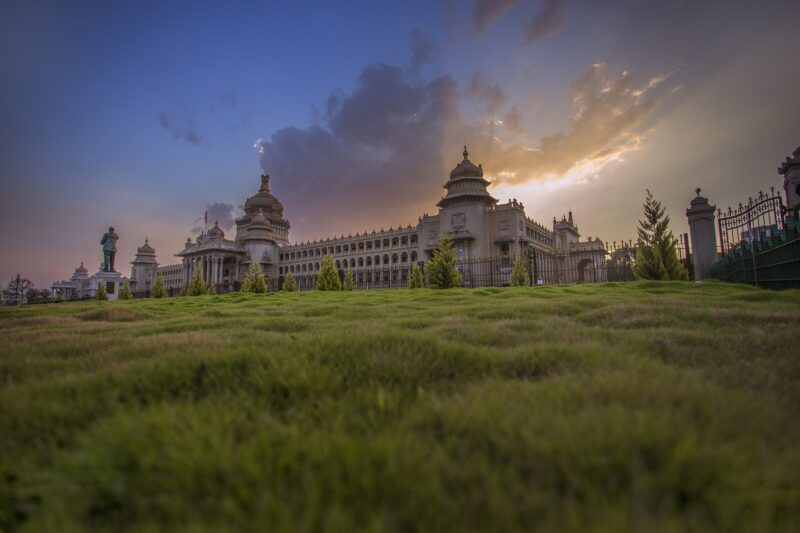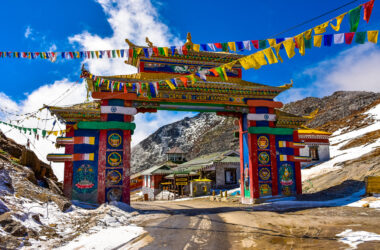Bangalore, often referred to as the “Garden City” or “Silicon Valley of India,” is famous for many things, but one feature that stands out to both residents and visitors is its delightful weather. Unlike most other cities in India, where summers are scorching and winters can be freezing, Bangalore enjoys a moderate climate year-round. But what makes Bangalore’s weather so special? Let’s dive into a detailed look at the city’s climate and how it impacts life in this bustling metropolis.
Table of Contents
- Geographical Influence on Bangalore’s Climate
- Seasons in Bangalore
- Summer in Bangalore (March to May)
- Monsoon in Bangalore (June to September)
- Autumn Transition (October)
- Winter in Bangalore (November to February)
- Humidity Levels Throughout the Year
- Wind Patterns in Bangalore
- Temperature Fluctuations Across the Year
- Best Time to Visit Bangalore Based on Weather
- Impact of Weather on Bangalore’s Lifestyle
- How Climate Change is Affecting Bangalore
- Bangalore’s Weather Compared to Other Cities in India
- Conclusion
- FAQs
Geographical Influence on Bangalore’s Climate
Bangalore’s climate owes much to its geographical location. Situated at an elevation of approximately 3,000 feet above sea level and on the Deccan Plateau, the city enjoys cooler temperatures compared to other low-lying areas in India. Its latitude and altitude combine to make it an oasis of temperate weather in an otherwise tropical region. The relatively high altitude also ensures that even during the hottest months, Bangalore stays cooler than coastal cities like Mumbai or inland cities like Delhi.
Seasons in Bangalore
Though Bangalore enjoys moderate temperatures, it does experience the typical seasonal changes associated with India. These seasons, however, are less extreme in Bangalore than in most other parts of the country. The city’s seasons can be broken down into:
- Summer (March to May)
- Monsoon (June to September)
- Autumn Transition (October)
- Winter (November to February)
Each season has its own charm, but none are overwhelmingly harsh, which is why Bangalore is considered an ideal place to live and visit.
Summer in Bangalore (March to May)
Bangalore’s summer season is warm but rarely uncomfortable. With temperatures ranging from 25°C to 35°C (77°F to 95°F), it doesn’t experience the sweltering heat that northern cities like Delhi face. The high elevation of the city keeps the temperatures more moderate, making summer a pleasant season for outdoor activities and exploring Bangalore’s parks and streets. You can still visit markets, temples, and the famous Cubbon Park without feeling like the heat is too much.
One of the biggest advantages of summer in Bangalore is that even when the temperatures rise, it cools down considerably at night, offering relief to both locals and tourists.
Monsoon in Bangalore (June to September)
The monsoon brings a dramatic change to Bangalore. Rain showers become frequent and heavy, with the city receiving an average of 860 mm of rainfall annually. The southwest monsoon winds sweep over the city, often turning it lush and green—a true reflection of its “Garden City” moniker.
While the rains rejuvenate Bangalore’s landscape, they also pose challenges. Flooded streets and traffic jams can slow down the city’s otherwise fast pace. However, Bangaloreans have adapted to the monsoon, and raincoats, umbrellas, and waterproof shoes become wardrobe essentials during this season. Despite the inconveniences, the rains cool the city significantly, making it a refreshing change from the hot summer days.
Autumn Transition (October)
After the heavy rains subside, Bangalore experiences a brief period of transition in October. This season is a sweet spot between the monsoon’s end and the arrival of winter. The skies clear up, the temperatures dip slightly, and the air is crisp. The festive season in Bangalore, including Dussehra and Diwali, adds to the charm of the mild autumn, making it an ideal time for outdoor activities and cultural events.
Winter in Bangalore (November to February)
If you ask locals what their favorite season is, winter will probably top the list. Bangalore’s winters are mild and pleasant, with temperatures ranging from 15°C to 25°C (59°F to 77°F). There’s no need for heavy winter wear; a light sweater or jacket suffices during the cooler mornings and evenings.
Many people love winter in Bangalore because it’s the perfect season for outdoor dining, festivals, and exploring the city’s historical sites. It’s also the best time to visit nearby hill stations like Nandi Hills or take day trips to wildlife reserves like Bannerghatta National Park.
Humidity Levels Throughout the Year
Bangalore experiences moderate humidity, ranging between 50% and 80% depending on the season. During the monsoon, humidity levels soar, but the cooler temperatures offset any discomfort. In the summer, though the temperature rises, the relatively low humidity keeps the heat manageable. Overall, the air feels fresh, and the city avoids the oppressive mugginess experienced by coastal cities like Chennai.
Wind Patterns in Bangalore
The winds in Bangalore are an important factor in its weather. The city is influenced by the southwest monsoon winds that bring heavy rains during the monsoon season. Additionally, the constant breezes that sweep through Bangalore throughout the year help keep the climate cooler, especially during the summer.
Temperature Fluctuations Across the Year
Bangalore’s average temperatures don’t fluctuate wildly, thanks to its unique geography. The warmest months are typically April and May, when temperatures can touch 35°C (95°F). However, even at its hottest, Bangalore stays cooler than many parts of India. During winter, the city cools down to an average of 15°C (59°F), which feels refreshing but not too cold. Monthly temperature breakdowns reveal that Bangalore enjoys comfortable weather nearly every month, with no drastic extremes.
Best Time to Visit Bangalore Based on Weather
If you’re planning a trip to Bangalore, the best time to visit is from October to February. During these months, the weather is cool and dry, ideal for sightseeing, outdoor activities, and experiencing the city’s vibrant cultural scene. The winter months also coincide with several festivals and events, offering visitors a chance to immerse themselves in the local culture.
Impact of Weather on Bangalore’s Lifestyle
Bangalore’s weather has a significant impact on its lifestyle. With year-round pleasant temperatures, the city’s residents enjoy an outdoor-centric culture. From weekend hikes to Nandi Hills to leisurely strolls through Lalbagh Botanical Garden, the moderate climate encourages people to be outside. Bangalore’s numerous cafés and rooftop restaurants thrive because the weather is almost always conducive to alfresco dining.
How Climate Change is Affecting Bangalore
In recent years, Bangalore has seen signs of climate change, with unpredictable weather patterns becoming more frequent. Warmer-than-usual winters and unseasonal rainfall are a growing concern. Flooding during the monsoon has also become more common, partially due to urbanization and changing weather patterns. Despite these changes, Bangalore’s climate remains one of its most attractive features, though there’s an increasing need to address sustainability and urban planning challenges to preserve this.
Bangalore’s Weather Compared to Other Cities in India
Compared to cities like Delhi, which experiences extreme summers and winters, or Mumbai, which has intense monsoon seasons, Bangalore’s climate is remarkably temperate. It doesn’t see the extreme heat of Chennai, nor the freezing temperatures of northern cities. This balance makes Bangalore one of the most livable cities in India.
Conclusion
Bangalore’s weather is one of its defining features. With its temperate climate, comfortable temperatures, and occasional rains, the city offers a pleasant environment year-round. Whether you’re visiting or planning to make Bangalore your home, you can rest assured that the weather will always be one of the city’s greatest assets.
Read More About Bangalore
FAQs
Climate change has made Bangalore’s weather slightly more unpredictable, with warmer winters and heavier monsoon rains becoming more frequent in recent years.
What is the best month to visit Bangalore for pleasant weather?
The best months are October to February when the weather is cool, dry, and perfect for outdoor activities.
Does Bangalore experience extreme temperatures?
No, Bangalore enjoys moderate temperatures year-round, with the hottest months rarely exceeding 35°C (95°F) and winters staying comfortably mild.
How does the monsoon affect daily life in Bangalore?
The monsoon can cause disruptions, such as flooding and traffic jams, but it also brings much-needed relief from the summer heat and rejuvenates the city’s greenery.
Is air conditioning necessary in Bangalore homes?
While some homes may have air conditioning, it’s generally not a necessity due to Bangalore’s moderate climate. Ceiling fans are often sufficient.
How has climate change impacted Bangalore’s weather recently?
Climate change has made Bangalore’s weather slightly more unpredictable, with warmer winters and heavier monsoon rains becoming more frequent in recent years.









